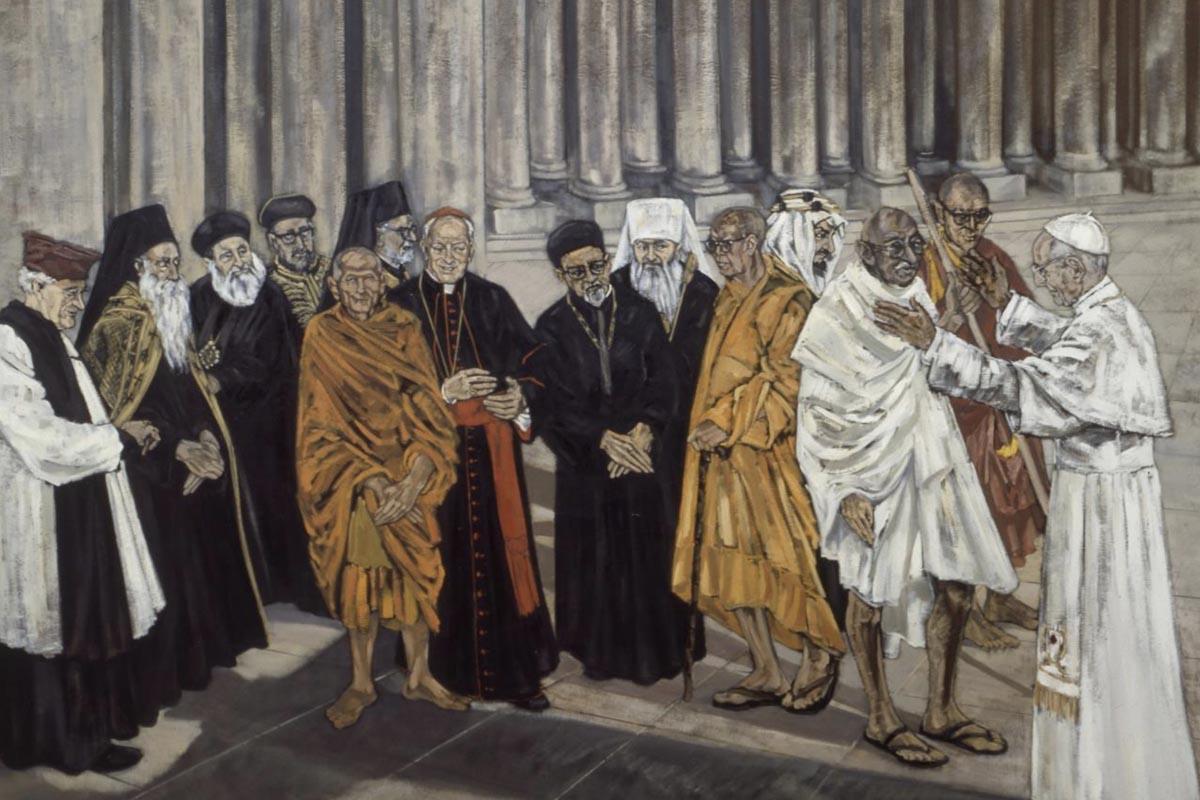Interreligious vs. Interfaith: Exploring the Similarities and Differences Between These Terms

“Interreligious” and “interfaith” are two ways to refer to engagement between individuals, groups, or institutions with different religious beliefs, traditions, and even contrasting attitudes toward the notion of “religion” itself. While “interfaith” and “interreligious” are often used interchangeably, some scholars, practitioners, and activists prefer one term over the other due to subtle differences in meaning.
Defining “Interfaith” vs. “Interreligious”
Interreligious: Some scholars like HIU’s Professor Lucinda Mosher argue that “interreligious” is the most inclusive term for referring to the interaction or dynamism between individuals, groups, or institutions with different religious identities or views toward religion, including those for whom “faith” may not be a factor.
Interfaith: This term tends to be preferred by individuals, groups, and institutions that focus on collaboration between people of different religious traditions for a common cause or to work toward shared goals. Some consider “interfaith” a broader label because it allows space for people who don’t like “religion.”
Understanding The Terms: Interreligious Studies vs. Interfaith Studies
Interreligious Studies: This is a field of research and practice that bridges the gap between theory and real-life practice by going beyond simple comparison-making to focus on the ways in which people or groups with different attitudes toward religion relate to each other. The field involves practitioners and scholars alike, encouraging instructors and students to be open about their personal commitment to a particular religion and attitude toward religion in general.
Interfaith Studies: This field also focuses on teaching the skills, attitudes, and knowledge needed to create deeper understanding. It is closely tied to what’s often called the “Interfaith Movement,” which brings together individuals and groups — whatever their attitude toward religion may be — to work for the common good. As Dr. Eboo Patel, the founder of Interfaith America, says, the ultimate goal is to make interfaith collaboration a social norm.
When Choosing the ‘Right’ Term Means Embracing Both
Seminaries and divinity schools are likely to use “interfaith” when naming their programs, while universities often use “interreligious.” Despite their different names, these programs share very similar goals and concerns. Sometimes, the best choice is to refuse to pick one or the other. The Association for Interreligious/Interfaith Studies, for instance, embraces both terms. The organization describes itself as “a collaboration of scholars, practitioners, and activists who are committed to advancing the field”— no matter which name for that field they, or their institutions, may prefer.
What About HIU?
HIU offers degree programs in Interreligious Studies and co-publishes the Journal of Interreligious Studies. Our curriculum balances scholarly analysis and reflection with the practical application of interreligious studies principles and methods, preparing students for careers in chaplaincy, peacebuilding, or community leadership where they will engage directly with people who subscribe to different traditions of belief and practice.
Whether exploring comparative theology, religious history, or the philosophical underpinnings of various religions, HIU provides students with the resources, skills, and understanding necessary to promote dialogue and cooperation in a multireligious world. Others might call this “interfaith.” If so, that’s fine with us. Photo Credit: Followers of God, by Dolores Puthod, 1978
